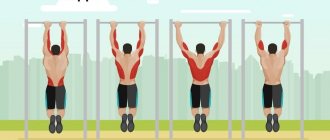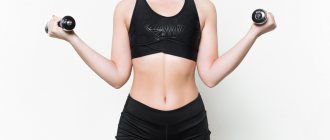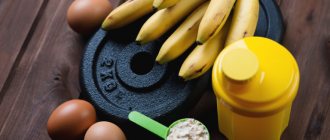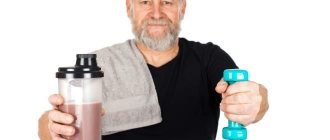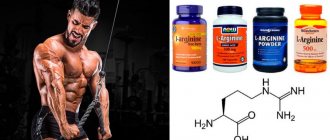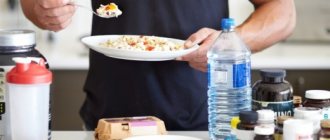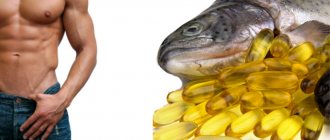Effects of alcohol on the muscular system
Drinking alcohol after a workout is not a good idea. Doing this will waste your time in the gym because alcohol interferes with muscle building.
How alcohol affects the muscular system:
- Inhibits muscle protein synthesis. Alcohol slows down the process of amino acid reunification and provokes the production of cortisol. This hormone, in turn, destroys proteins in tissues and promotes the accumulation of adipose tissue.
- Reduces the level of testosterone, which is responsible for the growth of muscle mass. At the same time, alcohol accelerates the conversion of testosterone to estrogen. Some drinks, such as beer, already contain estrogen-like substances and stimulate estrogen receptors.
- Reduces the production of growth hormone, which responds to the development of muscle tissue cells.
- Interferes with normal muscle recovery after exercise. Alcohol is a poison, so the body is forced to spend a large amount of energy on removing toxins, and not on regenerating muscle tissue.
- Leads to dehydration of all body systems. Drowsiness and weakness appear, and the normal functioning of cells in muscle tissue decreases. Since water plays a crucial role in building muscles, its deficiency leads to stunted growth and development.
- Inhibits the synthesis of glycogen, which is a source of energy for muscles.
- Reduces muscle strength as it disrupts the rate of muscle protein synthesis. Therefore, it will be difficult to train the next day after drinking alcohol.
IMPORTANT! Alcohol intoxication leads to sleep disturbances and insomnia, which negatively affects muscle function and recovery after sports.
How does smoking affect physical fitness?
Tobacco smoke leads to chronic inflammation of the airways, narrowing of their lumen, bronchitis, cough and deterioration of lung function. This means that when playing sports, a person can no longer receive the required amount
of oxygen.
In addition, tobacco smoke contains carbon monoxide, which prevents blood cells from carrying enough oxygen to the muscles. Due to oxygen starvation, muscles cannot work at full strength, get tired faster and get injured. And under the influence of nicotine, the heart of a smoker can make many thousand more contractions
than that of a non-smoker. The forced operation of the heart during sports leads to premature wear of the heart muscle and even its death.
How to reduce the effect of alcohol on muscles
Any drinking has a negative impact on the athlete’s health. Alcohol is not compatible with sports, as it interferes with the body's recovery process after training and leads to depletion of energy resources. However, there are methods to reduce the harmful effects of alcohol on the body:
- After drinking strong drinks, you should avoid going to the gym and intense workouts for the next 2 days.
- While drinking alcohol, you need to snack on protein foods: meat, poultry, cheese or seafood.
- On the eve of the banquet, be sure to drink plenty of water.
- Before drinking alcohol, it is recommended to take 500 mg of ascorbic acid (vitamin C).
- The next morning, drink a glass of freshly squeezed orange juice and have a good breakfast. The following foods are suitable for restoring strength: porridge, cottage cheese and fruits.
- Do not mix incompatible drinks, such as wine and beer. This can lead to poisoning and a severe hangover.
- To quickly remove toxins from the body, it is recommended to consume foods such as lemon, cabbage and parsley.
Drugs and supplements (dietary supplements) that reduce the effects of alcohol:
- Glutamine. This supplement increases growth hormone, which saves muscles from the harmful effects of alcohol.
- Activated carbon. To reduce the effect of alcohol on the body, it is enough to drink 1 tablet per 1 kg of weight.
- Eleutherococcus. To achieve the desired effect, you should drink 20 g of herbal tincture before the banquet.
- Nutricleans. 1 capsule of the drug is taken an hour before drinking alcohol and washed down with a glass of water.
- ZMA. This is a product of natural origin that can increase the level of growth hormone, which was reduced during the feast.
Instead of alcohol after training, you can drink:
- Mate tea. It tones well, improves mood, invigorates and helps cleanse liver cells.
- Herbal infusion. Helps replenish fluid deficiency in cells that occurs during training.
- Green tea. Improves metabolism, increases tone and stimulates the immune system.
- Mineral water. Helps restore water-salt balance.
Alcohol and testosterone levels
Alcohol has a negative effect here. It suppresses testosterone levels, but the severity of this effect varies. For example, a study conducted by the TNO Research Institute of Nutrition and Nutrition compared 10 men drinking 30-40 deciliters of alcohol per day (2-3 beers or 300 ml of wine). After three weeks, their testosterone levels dropped significantly, to 7%. The following study involved 9 guys who consumed 60-70 grams of alcohol after exercise, which had no effect on testosterone levels over the next 5 hours . But what happens if you drink a few beers after your workout ?
The University of Helsinki conducted a similar study. In the study, participants (healthy men aged 20-26 years) were injected with 1.5 g of ethanol per kg of body weight. They found that their testosterone levels dropped by an average of 23% from 10 a.m. to 4 p.m. after drinking alcohol. In addition, cortisol levels were increased by an average of 36% , and growth hormone secretion was greatly suppressed.
Another study conducted at the same university confirmed this. After a workout, drinking alcohol is a heavy burden on testosterone production. What you might expect has been proven, that is, 10 beers is a poor choice after a workout. Additionally, one study found some troubling results. Testicular shrinkage was found to be up to 50% in rats fed 5% ethanol-based calories.
Alcohol-dependent men not only had significantly lower testosterone levels, but also higher estrogen levels compared to men without alcohol problems who had excellent liver function. (Study 1, Study 2, Study 3).
So, with all this in mind, if you drink alcohol occasionally, you probably don't have anything to worry about when it comes to your testosterone levels . But drinking after a workout is a very bad idea.
Alcohol and excess weight
Alcohol is a very high-calorie product: 1 g of 96% ethanol contains up to 7 kcal. Many alcoholic drinks contain additional components in the form of flavor enhancers, sugar and other harmful additives. When drinking one dose of strong alcohol, a person consumes many empty calories along with it.
How excess fat accumulation occurs when drinking alcohol:
- Appetite increases. Alcohol irritates the walls of the stomach, and the bitter taste of the drink increases appetite. Decreased control also leads to phantom hunger and eating large amounts of food.
- Fluid retention occurs in the body. Ethanol increases the process of tissue dehydration (increased fluid consumption in cells). When a person consumes alcohol, the production of antidiuretic hormone increases, which begins to actively accumulate fluid inside the body. This leads to moisture retention, swelling and excess weight gain.
- Metabolism is disrupted. Strong drinks contribute to the release of insulin into the blood, resulting in the accumulation of excess subcutaneous fat. Fatty tissue also accumulates on internal organs, which reduces their performance. All these processes lead to metabolic disorders and digestive disorders.
Alcohol promotes fat gain
The stronger the alcohol, the higher its calorie content. In this case, the calories of any alcohol-containing drink will be “empty”, since they do not contain any useful substances and no nutritional value so that the body can use them to build muscles or maintain vital functions.
Do not think that low-alcohol, low-calorie drinks are safe in terms of weight gain. Of course, 100 ml of beer is only 26 kcal. This is less than in milk or kefir. However, few people limit themselves to this amount of alcohol. On average, a person consumes at least 1.5-2 liters of beer during a party, which is about 500 kcal from the drink alone.
Do not forget that alcohol significantly increases appetite and at the same time reduces self-control, as a result of which it is very easy to exceed the daily recommended calorie intake by consuming unhealthy, fatty or sugary foods.
Other negative factors in the effect of alcohol on muscles include severe dehydration, in which muscle growth completely stops, increased consumption of vitamins and microelements, which alcohol “washes” from the body, as a result of which the necessary nutrients do not reach the muscles, as well as sleep disorders and, as a result, poor-quality and incomplete restoration of the body.
When deciding whether to drink alcohol, carefully weigh the pros and cons and evaluate the possible short- and long-term consequences. If you are still inclined towards a positive answer, approach the question as consciously as possible and try to control the amount of alcohol you drink.
How you feel after drinking alcohol
The main component of alcoholic beverages is ethanol (ethyl alcohol). Once in the body, ethanol, under the influence of certain enzymes, is converted into acetaldehyde, which is a highly toxic substance. The toxin can cause redness of the skin, nausea, increased heart rate and other unpleasant sensations.
How alcohol affects the body:
- Increases body temperature.
- Causes increased sweating.
- Changes the process of thermoregulation.
- Increases blood viscosity.
- May lead to fainting.
- Helps lower blood pressure.
- Leads to destructive changes in the functioning of the brain.
- Reduces coordination.
- May cause migraines and dizziness.
- Reduces the amount of vitamins and beneficial nutrients in the body (Calcium, Iron, Zinc, vitamins A, B and C).
Alcohol consumption is strongly associated with changes in well-being and emotional state. Alcohol affects behavior and mood, causing mental imbalance and aggressive behavior.
Everything is lost?
“Everything is lost” only if you look at one day taken from life, and not consider several weeks or even months. If the rest of the time a person is in a real calorie deficit, nothing can make him gain fat out of thin air, not even alcohol.
Alan Aragon has done a good selection of research on the topic. Thus, a systematic review of studies from 1984-2010 showed that moderate alcohol consumption is not associated with excess weight, except for heavy drinkers ().
In another study, participants ate 1,500 calories for three months. One group received 10% of calories from white wine, the second from grape juice. Scientists found no difference in body composition in both groups. Although this did not reach statistical significance, there was even slightly more weight loss in the wine group.
In another study, researchers also found no changes in body weight or fat levels despite adding two glasses of red wine to dinner for six weeks.
Moderate wine consumption (190 ml five days a week for 20 weeks) did not improve or worsen insulin sensitivity, weight, body composition, blood lipids or blood pressure in overweight women ().
But a recent systematic review and meta-analysis of 47 studies found that drinking more than 500 ml of beer per day is associated with increased belly fat, although scientists have many questions there.
Effect on internal organs
Alcohol consumption has a detrimental effect not only on the quality of training, but also on the functioning of all systems of the athlete’s body.
The effect of alcohol on organs
How alcohol affects internal organs:
- Liver. Alcohol increases the load on the liver, dehydrating it and depriving it of nutrients. At the same time, glucose metabolism is disrupted and immunity is reduced.
- Nervous system. Ethyl alcohol leads to the death of neurons responsible for nerve impulses. A person's mental performance decreases and memory deteriorates.
- Gastrointestinal tract. In this case, the esophagus, stomach and intestines are affected. Alcohol damages the mucous membranes of the gastrointestinal tract, which can lead to burns, gastritis, peptic ulcers, cancer, pancreatitis and intestinal disorders.
- Respiratory system. Alcohol disrupts gas exchange, damages lung tissue cells and dries out the mucous membrane of the respiratory tract.
- Heart. Ethanol leads to excess stress on the heart muscle, disruption of the cardiovascular system and increased heart rate. Any training in this state is extremely contraindicated.
Drinking alcohol before sports activities
If you can't drink alcohol after the gym, maybe it's acceptable to drink a glass before physical exercise? Experts say: alcohol before going to fitness is no less destructive for the body. Decided to have a little drink after dinner? In this case, you can forget about fitness in the morning, otherwise the consequences will be unfavorable.
The liver, which was affected by alcohol in the evening, cannot function normally. This also affects the muscles of the heart, which begin to work intensively for wear and tear. Additional physical activity in this case is contraindicated, as it provokes stroke, myocardial infarction and other serious pathologies that lead to hospitalization.
Most alcohol-based drinks include sugar, which causes their calorie content to skyrocket. This means that a lover of alcoholic cocktails, sweet wine and liqueurs will have to train hard to burn off the resulting useless calories. Increased physical activity that does not correspond to your level of fitness negatively affects the functioning of your organs, including the heart muscle. Therefore, instead of strong drinks, use freshly squeezed juices and special protein-based products that help strengthen the muscular system.
Permissible doses of alcohol
To understand at what doses alcohol causes minimal harm to health and success in sports, you need to study the comparative table:
- Up to 25 g of pure alcohol per 70 kg of weight. The drink can have a slight tonic effect while simultaneously inhibiting the processes of the nervous system. There is a process of slowing down the breakdown of fat and muscle catabolism.
- 25-35 g of pure alcohol per 70 kg of weight. The level of cartisol in the body increases, the process of cell regeneration is suspended, and the tonic effect ends.
- More than 35 g of pure alcohol per 70 kg of weight. Drinking alcohol in such doses blocks the secretion of growth hormone, which leads to the accumulation of fatty tissue and loss of muscle mass.
'Fascinating' statistics about alcohol
Here are the numbers VTsIOM tells us about alcohol:
- Over the course of a year (from 2022 to 2022), the share of non-drinking Russians decreased from 40% to 33%. 67% of citizens drink from time to time.
- At the same time, 29% of respondents admitted that they smoke (16% of them more than 1 pack a day).
- The Russian Federation ranks 16th in the World Health Organization's ranking of the world's heaviest drinking countries (11.7 liters of alcohol per capita).
Moreover, the poverty of the country affects the amount of alcohol consumed only indirectly. For example, Nigeria is a poor African country, where, in addition, 50% of Muslims have become the highest drinkers on the African continent (10th in the world according to WHO).
The culture of drinking alcohol greatly influences the statistics (I’m tempted to say, what the hell is the culture of drinking?). For example, in Belgium, where beer is the national drink, there are more than 1,600 types of alcohol, and beer festivals are held (as in Germany).
Belgium became the first country in the world in terms of the amount of alcohol consumed per capita (according to the European publication Statista). According to WHO, the first country in this dubious ranking is the Republic of Moldova (15.2 liters per person per year).
In order to clear the atmosphere a little, I can say that the amount of alcohol consumed per person per year is decreasing.
For example, in Russia:
- 2014: 15.76 liters per person per year.
- 2016: 15.1 liters per person per year.
- 2018: 11.7 liters per person per year.
Thus, in Russia the amount of alcohol consumed per person per year decreased by 34.7% in just 5 years.
This, in my opinion, is connected not so much with the promotion of a healthy lifestyle, but with increased prices for food and everything else. People simply refuse things that are less necessary for them.
Athletes and alcohol
Alcohol destroys the body's aerobic capacity and reduces the athlete's endurance. However, many athletes ignore this fact, which negatively affects their reputation:
- Mikhail Koklyaev, Russian strength sports athlete. He was noticed drinking alcohol, and later realized the pseudo-benefits of such drinks. Moreover, Mikhail was a participant in an accident where a pedestrian died. We don’t know whether he was drunk then, but Koklyaev refused a medical examination. His interview:
- Tyson Fury, the undefeated British heavyweight boxer, defeated V. Klitschko. He stopped his career, in part, because of alcohol and drugs. Gradually he is stripped of all his titles.
One of T. Fury’s quotes: “I drink, I’m on the verge of alcoholism - I drink from Monday to Sunday. I can't handle it, and when I drink myself into oblivion, it gets easier. I'm not lying, there's no need for that. I use drugs, cocaine, but I don’t dope.”
Former world champions Tyson Fury and Ricky Hatton
Interesting: Today, alcohol consumption is controlled by anti-doping agencies and is prohibited in some sports.
Summing up
So, what are the main conclusions that can be drawn from this article?
Alcohol is harmful - this is not even discussed. Bodybuilders should not expect any benefit from it. But if, nevertheless, circumstances have developed in such a way that it is very difficult to refuse to use it, or if you really really want it, then you can still drink a little. The main thing is to watch what exactly you drink and how much.
If you decide to drink a little whiskey, cognac or beer with friends once a month, in moderation, of course, then if you follow all the above rules of consumption, nothing bad will happen to you. But if you pass by the nearest eatery, occupied by local representatives of the “alcoholic beau monde”, with cute red-violet faces who offer you to drink “elite drink” in the form of hawthorn tincture with glass wash, then it is better to avoid such a group. And most importantly: always have a good snack! Good luck with your training, pleasant company, quality alcoholic drinks and no hangover!
Rating of the most sober regions of Russia for 2018
At the beginning of the video, there is a hypothesis about the origin of drunkenness in our country, and then there are horror stories about drinking, a must-watch for those who have not decided on alcohol:
The federal project “Sober Russia” conducted an independent study together with the All-Russian State Television and Radio Broadcasting Company and published a rating of the most “sober” and “drinking” subjects in the Russian Federation.
List of the most “sober” regions:
- Chechnya.
- Dagestan.
- Ingushetia.
Interesting: The Far Eastern region, Magadan region, Buryatia and the Nenets Autonomous Okrug were recognized as the heaviest drinkers. Moscow took 28th place in the ranking, and St. Petersburg was in 30th position.
Alcoholization of regions
Alcohol and sports are incompatible. Alcohol consumption reduces endurance and the ability to withstand intense exercise. In order for classes in the gym to bring certain results, you should give up strong drinks during the training process.
Letter from a subscriber
Before I gently immerse you in the topic of alcohol and sports (it sounds, of course, so-so), I want to let you read a letter that I received by E-mail from one of my subscribers:
This story gave me goosebumps...
First, the numbers... 0.5-0.7 liters of strong alcohol per day does not look healthy in itself. And even over a long period of time (13 months).
I was incredibly pleased that a person began to look for parallels between the pleasure of alcohol and the pleasure of sports. It's cool that my blog somehow helps people with such an unpleasant illness.
The difference in this pleasure is that when you drink alcohol, you get pleasure in too simple a way (undeserved pleasure).
And if you train, then through regularly applied physical effort. In both cases, our brain's reward system responds by releasing certain kinds of hormones (dopamine, endorphin, etc.) that make us feel happy.
But which way of receiving pleasure do you think our body likes more?
Even though alcohol is bad for our health (I'll explain why later), our brains like to save energy and have fun. Therefore, when we start drinking alcohol regularly, we begin to get used to the fact that happiness can be obtained in a simple way (not deservedly).
Hence, the lack of motivation to go to training.
But the problem is not only these things (undeserved pleasure and harm to health), the problem is that over time, the amount of alcohol that previously gave us pleasure becomes insufficient, so we have to drink more.
Previously, 1 glass of wine was enough for us.
In a month we already need half a liter.
A month and a half later, a bottle of wine (0.75 l).
Then, the wine seems expensive, so we can drink something stronger, we drink 300 g of vodka. Then half a liter. Then 0.7, and then...
We start drinking every day.
Unfortunately, this happens to many people. And in order not to be unfounded, let me give you some numbers.


